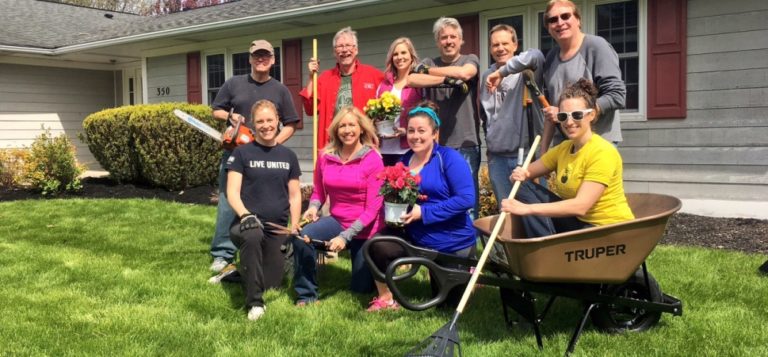
By Tim Joyce
More and more companies are embedding customer care in their products and services and transforming customer experience as a result. It simplifies resolution, cuts down call times and makes the best use of technology and people.
Here are five great examples of embedded customer care that have caught our eye.
Amazon Kindle Fire HDX ‘Mayday’ Button
When users are in trouble, they want help fast, and that’s exactly what Amazon promises with the ‘Mayday’ button on its Kindle Fire HDX tablet. You swipe down from the top of the screen, hit the button and your call is answered within 15 seconds.
But this goes beyond a simple customer support call. The service agent takes over your screen and can guide you through the steps to fix your problem. They’re also connected to you via a live video feed, which makes the process more personal and interactive.
And what about security? They’ve got that covered. The screen is paused as you enter passwords, and all exchanges are encrypted. And the video feed is one-way only, so your privacy is also taken care of.
It’s a really clever blend of high tech and human input. And it’s all part of Amazon’s drive to push up levels of customer service. Or as they put it, “we strive to be Earth’s most customer-centric company, and this is just one more way we are working to achieve that goal”.
That use of video, by the way, is something we’ll see in later examples. It’s a trend that’s growing, and one we should all keep an eye on.
http://www.slideshare.net/Xerox/breaking-the-customer-care-model-51934661
Samsung Remote Support
In the not-too-distant past, TVs just sat in the corner of the room and showed whatever was being broadcast at the time.
Not anymore. Now they’re full-blown entertainment hubs, with catchup TV, video-on-demand, games and apps. Smart TVs connected to the internet mean a quantum leap in complexity and potential support issues, however easy and ‘intuitive’ the technology is.
Which is why Samsung introduced Samsung Remote Support for their range of smart TVs. They know it’s faster, easier and more effective to have a trained support person diagnose and fix the issue directly rather than have the end user follow instructions.
Now all that user has to do is call Samsung and read off a PIN from the Remote Mangement menu on their TV. The Samsung technician then uses this to take full control of the TV. They can diagnose problems, customize settings, back up and restore, perform a factory reset and even install the latest firmware.
It’s a great example of getting the best out of technology and people, and of giving the customer a fast, efficient and hassle-free resolution.
5 great examples of embedded customer care. #WorkingBetter http://ctt.ec/T4dC6+ http://ctt.ec/6ah8f+
Dom: The Virtual Voice Ordering Assistant for Domino’s Pizza
The human touch is going to become more, not less, important as we move towards greater automation.
We’ve all heard the scare stories about how the robots are coming, and how they’re going to steal our jobs. But it’s not so. They’ll just change what we do, and take the drudgery away from us.
And sometimes, the stuff that isn’t drudgery – like ordering pizza.
Domino’s Pizza has introduced a virtual ordering assistant called Dom, based on Nina, the sister of Apple’s Siri. The VA uses natural language understanding to provide human-like interactions with customers.
It connects on the back-end to CRM and ERP systems, and when it needs to, it routes the call to live agents. It may even at some point in the future use voice biometrics to authenticate customers.
Dom is also clever enough to know that the fun doesn’t end with a Hawaiian with extra pineapple. It also takes the opportunity to upsell customers by tempting them with a dessert: “Want to take it to the next level? Add some chocolate crunch cakes?”.
Who could say no?
United Bank’s Interactive Teller
But life isn’t all thick crust and extra toppings. There’s lots of humdrum stuff too where technology can deliver faster, smoother and more efficient service.
Like banking. And you don’t have to be a big bank to have big ideas, as Atlanta-based United Bank has proved. They’ve introduced a revolutionary interactive teller, which links clients through to their customer-service center.
Developed by NCR, the drive-through ATM incorporates a video screen so that clients can talk direct to a real person. Each machine handles over 1,600 transactions a month, including deposits, withdrawals and check-cashing.
The ATMs are open longer hours than regular banks – from 7am to 11pm. So customers get a personalized experience at a time that suits them. And the banks maximize their resources, get the best use out of their personnel and deliver better customer service.
What we’re seeing here is almost paradoxical: more automation and more personalization. Lower costs and higher levels of service.
It’s a combination of high tech and human touch, and it’s proving a winner with customers.
Microsoft HoloLens
With high-speed internet and HD video now the norm, the way is open for interactive video customer service. In fact, Gartner says that more than 100 of the 500 largest global businesses will introduce video-based chat by 2018 for customer-facing interactions.
Already we’ve seen the emergence of products like Rescue Lens from Logmein, which links users up with support centers, letting them use their smartphone to give customer-service agents a first-hand view of the problem.
Microsoft HoloLens takes this even further. It lets you manipulate holograms, see designs in 3D, and even interact with objects.
This could transform customer care. With the user wearing the headset, the customer-service agent could follow what they’re seeing on a computer or tablet. The agent could then annotate the view, demonstrate a technique or indicate how to fix something. And unlike Rescue Lens, users are hands-free, which means they’d able to do a whole lot more.
The applications are endless: from home decoration to motorcycle maintenance, from healthcare to just about anything you can think of.
Customer Care Everywhere
These are just a few early examples of embedded customer care, but they’re a hint of what’s to come.
Just imagine a world where all of our connected devices are constantly feeding back data to improve service, support and customer experience. Where issues are remotely diagnosed and fixed – sometimes by humans, and sometimes by a combination of artificial intelligence and automation.
With the Internet of Things just around the corner, that world is about to become a reality. It’s estimated that the average home will have 500 connected ‘things’ by 2022, and many will have embedded, interactive customer care.
That’s a big challenge on the technical and the service front for all organizations. They’ll need to stay on their toes, react quickly, deploy cutting-edge technology and combine it with traditional customer care.
It’s a big ask, but the rewards are even bigger.
Subscribe to this blog and receive email updates when we publish a new article.



